Did you know that Tokyo has a volcano island where you can visit an active volcano in the morning and go snorkeling in the afternoon? The place is called Oshima Island.
Thanks to Tokyo Islands for sponsoring our trip. You can book a ferry to Oshima – or any of Tokyo’s islands – at www.tokyoislands.jp.
I was quite surprised when I first found out that Tokyo has a chain of subtropical islands to the south. Last year, we went to Shikinejima and Niijima. Niijima had a gorgeous white sand beach, while Shikinejima was a tiny island with fantastic little inlets to swim in with the kids.
The overwhelming feature of Oshima is it’s volcano, called Miharayama (Mt. Mihara). It’s an active stratovolcano, but you’re still able to hike right up to the caldera in the middle.
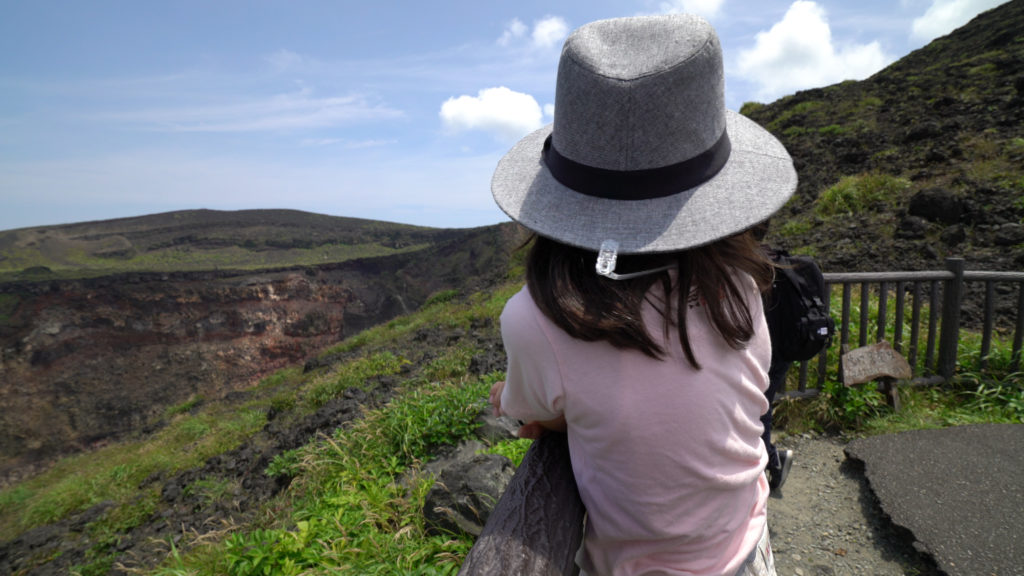
Something that is also unique about Oshima, is it’s black sand beaches, due to previous lava flows. Careful going barefoot though, it can get quite toasty!
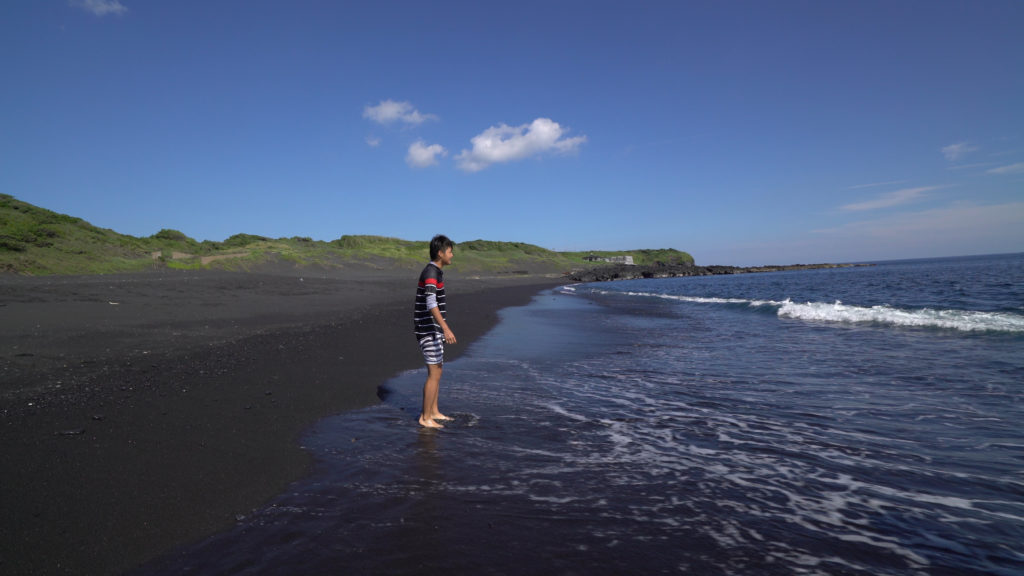
They also have some nice snorkeling beaches, like at Toshiki beach.
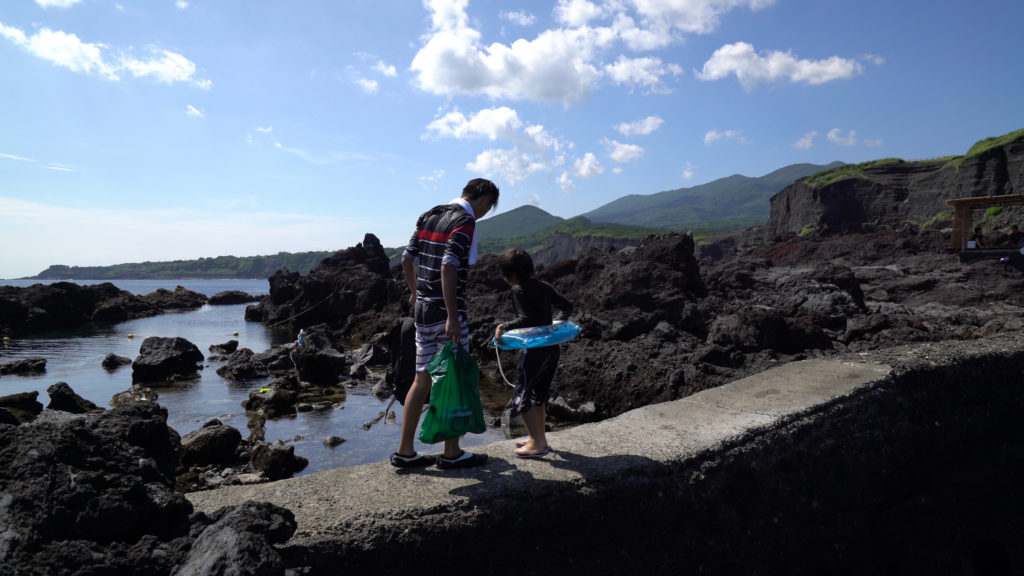
If you’re into doing some mild cliff jumping, Akinohama is where you want to be.
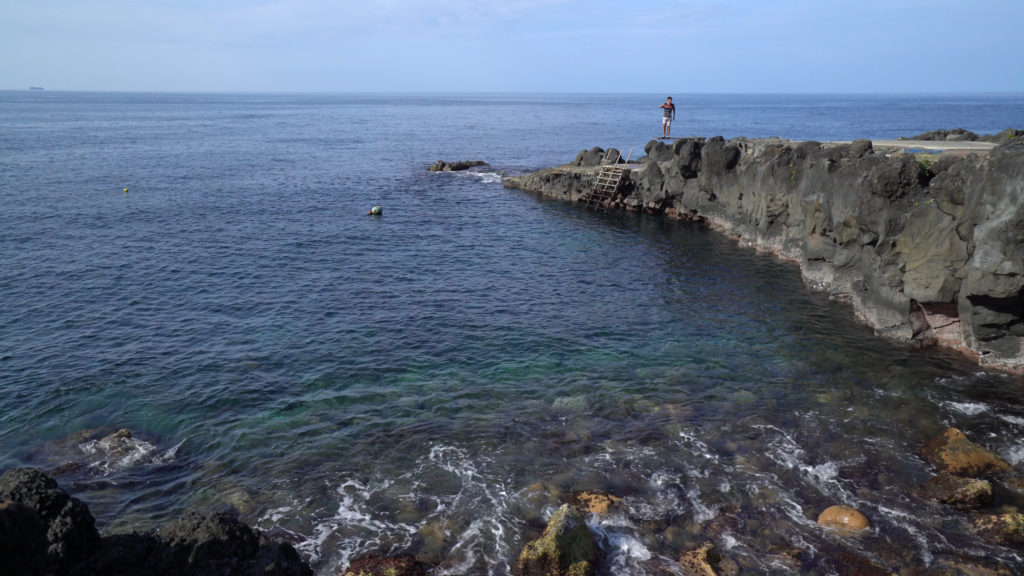
And if you have kids, then a safe bet is Hinodehama, which is protected by tetrapods, has some sand to walk on (instead of sharp corals), and a floating platform to swim out to.
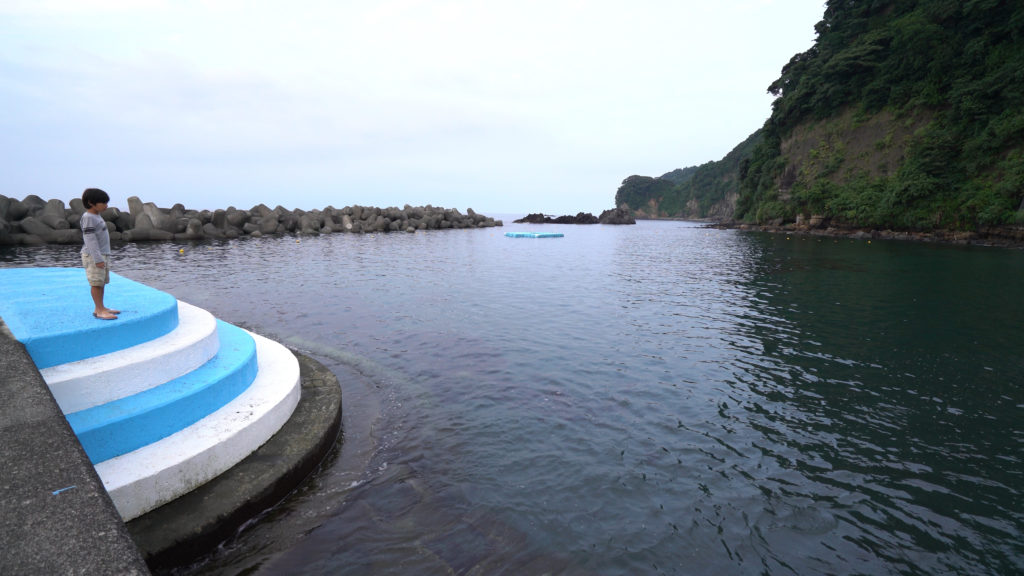
One thing you’re reminded of when you’re on Oshima is the natural disasters that occur. On Mt. Mihara it has safety shelters in case of an eruption.
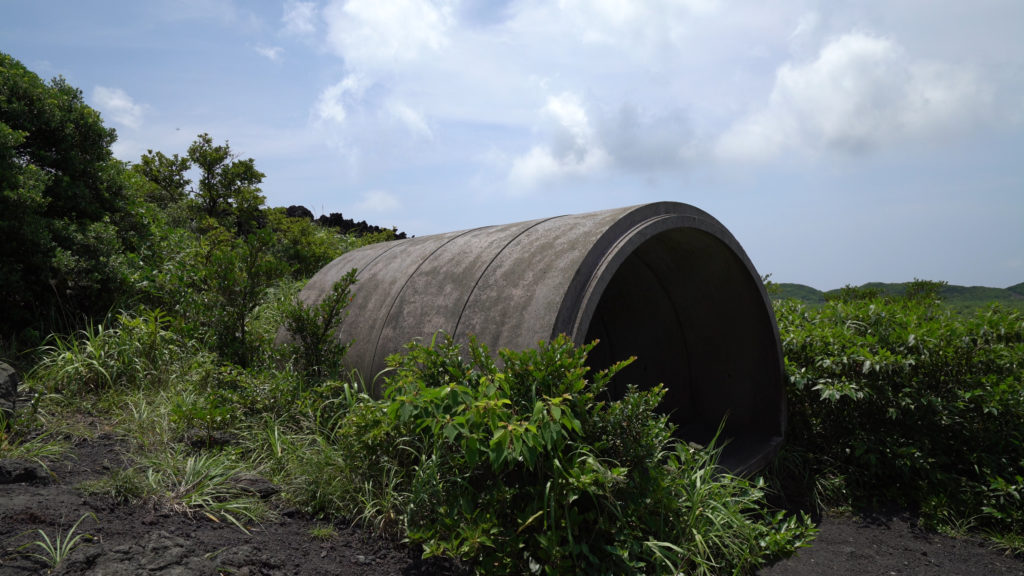
By the beaches, you may see signs instructing you on where to go in the case of a tsunami.
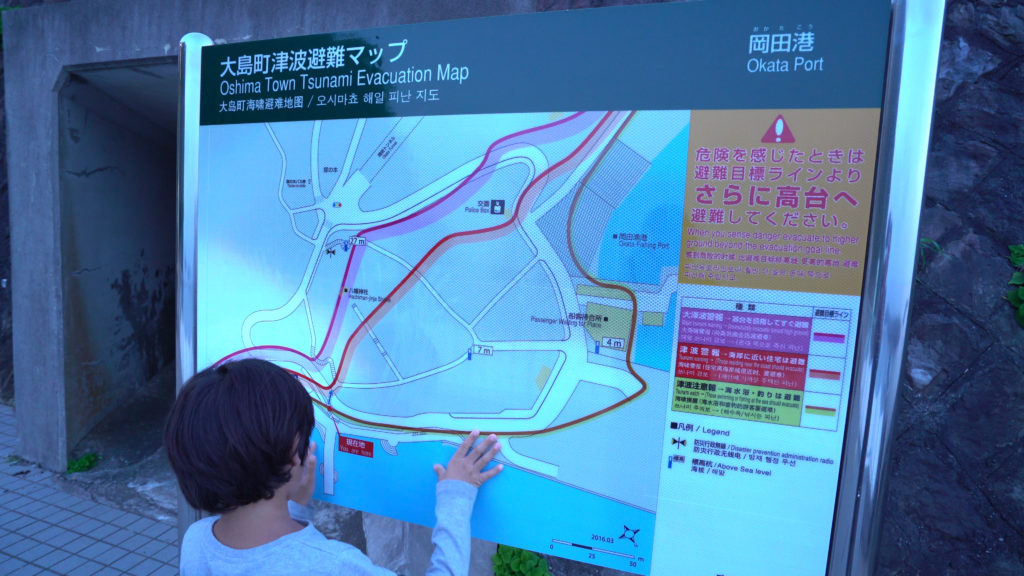
At the end of everyday, we stopped by the various onsens (hot springs).
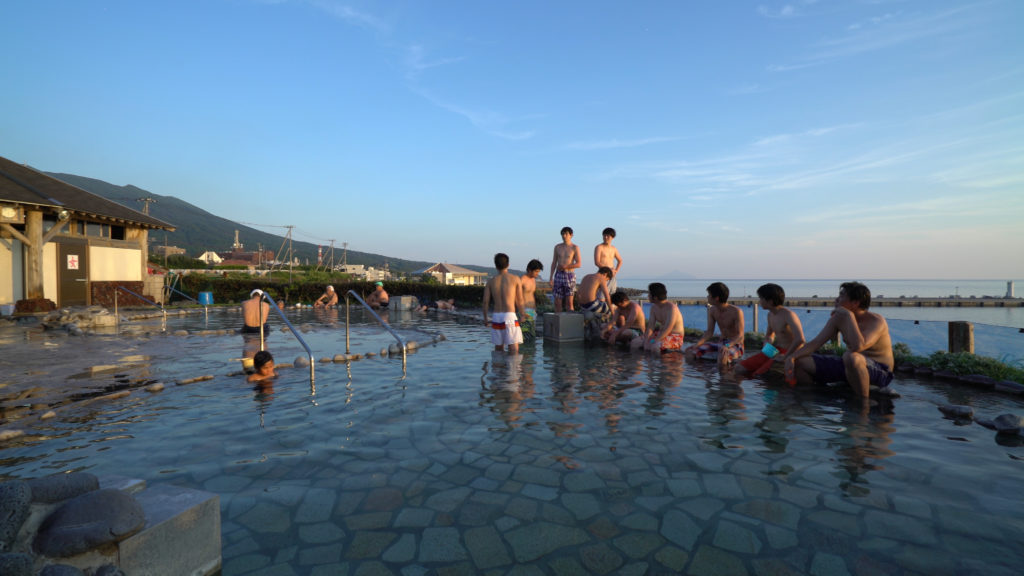
When it came to sleep, we enjoyed Mock Mock’s wood cabin, complete with ducks and hammocks.
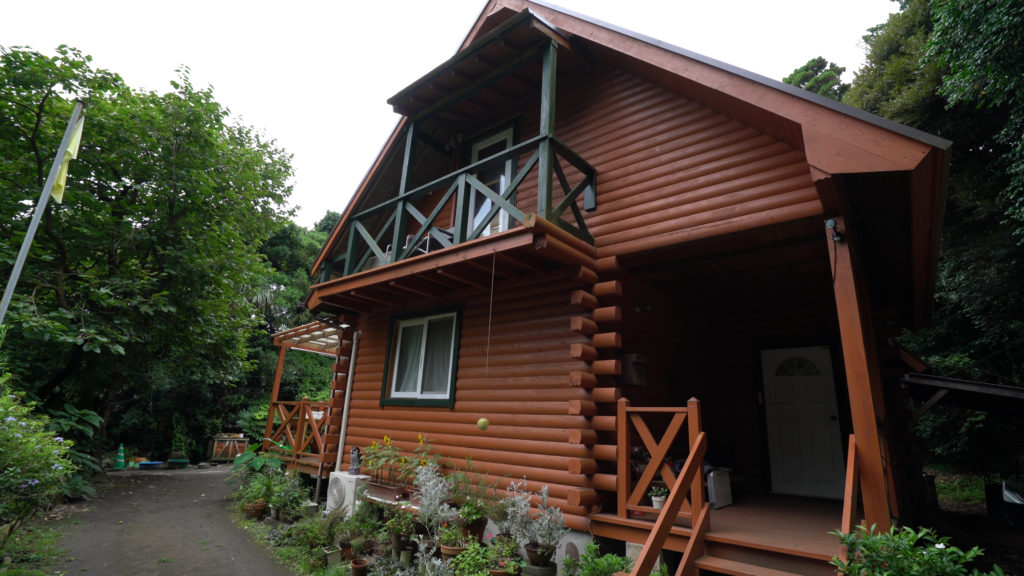
Before we went to bed though, we did a bit of stargazing at Mt. Mihara.
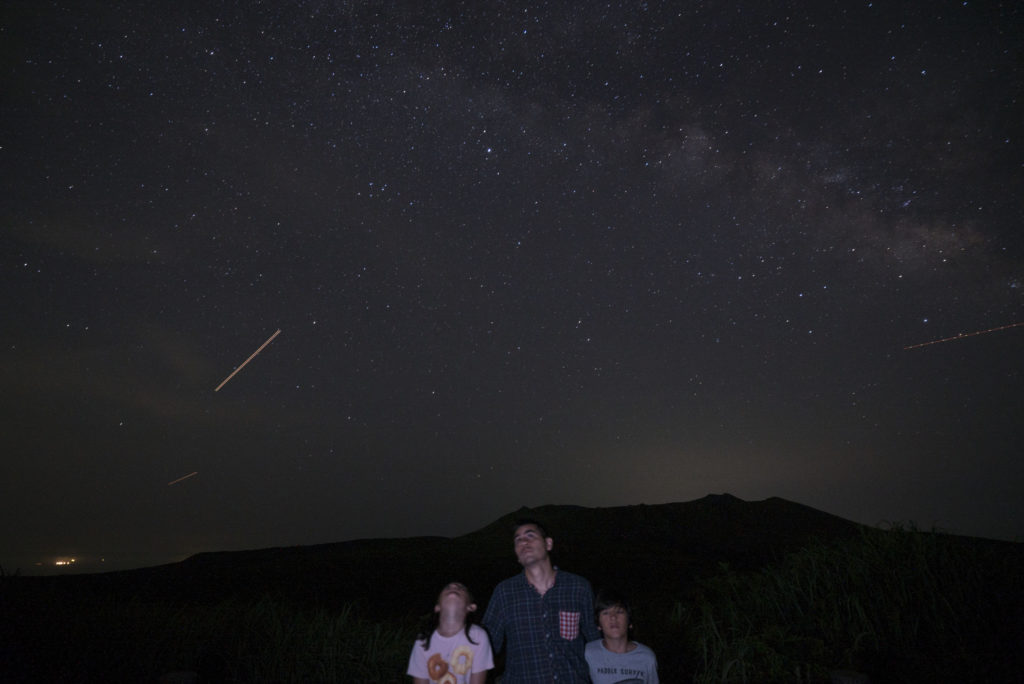
All in all, the kids had a great time at this volcano island getaway. For a map of the places we visited, check it out below!
Do you have any islands you visit where you’re from?
Frequently Asked Questions
What’s with the swimming clothing?
Many people in Japan wear rash guards. They protect against rashes and sunburn. Our wears it mostly for the sunburn protection. They are swim wear, so while at first I thought it weird, I find it better than having to reapply sunscreen many times or to get burnt badly (learned my lesson while snorkeling for many hours)!
It didn’t look busy on the island, were there many tourists or locals?
In general, it’s not a very busy island. We went in the summertime, which is the most popular time of the year for tourists. I don’t think you have to worry about crowded beaches. There are people, but not so many that you’re worrying about too many people at any of the nature spots (We saw another party maybe every 20 minutes during our hike up Mt. Mihara). If you’re going to the onsens or certain restaurants, it can get busy, as it’s an island with a small population and only so many places.
Can the kids swim?
Sota, who is 13, is a confident swimmer, as you can see in the footage. Shoko, Aiko, and Shin (11, 10, and 7) all have swimming lessons once a week at a local pool, as well as mandatory swimming lessons at school maybe 10 or 15 days out of the year. They don’t learn to dive though, or don’t practice in the ocean with waves and in deep water, so they were nervous to jump in off a cliff. But yes, they can swim, but were quite timid in the ocean. The black sand beach had a big drop off right where they were, so It was important to have an adult right there holding on to them. Toshiki beach (the coral beach) is very sheltered and fine to swim alone. Akinohama beach (where we doing the mini-cliff jumping) is fairly sheltered, but it’s quite deep (and you can see down to the bottom), so it can be nerve wracking for those who aren’t used to it. Hinodehama (the one with the blue platform where you didn’t see footage of the kids swimming) is the safest beach, in that it’s very protected, gets gradually deeper, and has some sand for the base (as opposed to coral). I have a map of all the beaches we visited up above.
How much does it cost to travel?
Tokyoislands.jp, the people who sponsored us, has a whole site that has links to ship ferry bookings and accommodations. You can find the prices there. But, the ferry for our family of four, cost ¥46,640, while the B&B was ¥45,200. Car rental was about ¥7,000 a day (so a total of ¥21,000). However, Oshima had a landslide 3 years ago, so Tokyo provides ¥3,000 per person (even kids), per day (up to 2 days) to go there. So, we got ¥24,000 in local cash that we could spend (which we paid to the B&B). So, for a family of four on a two night / three day stay, it was about ¥90,000, which includes breakfast, transportation, and accommodation. Add to that whatever spending money you want for food, souvenirs, and activities. The activities we did were free or very cheap, but there are some things like scuba diving that you could do that would put your more out of pocket.